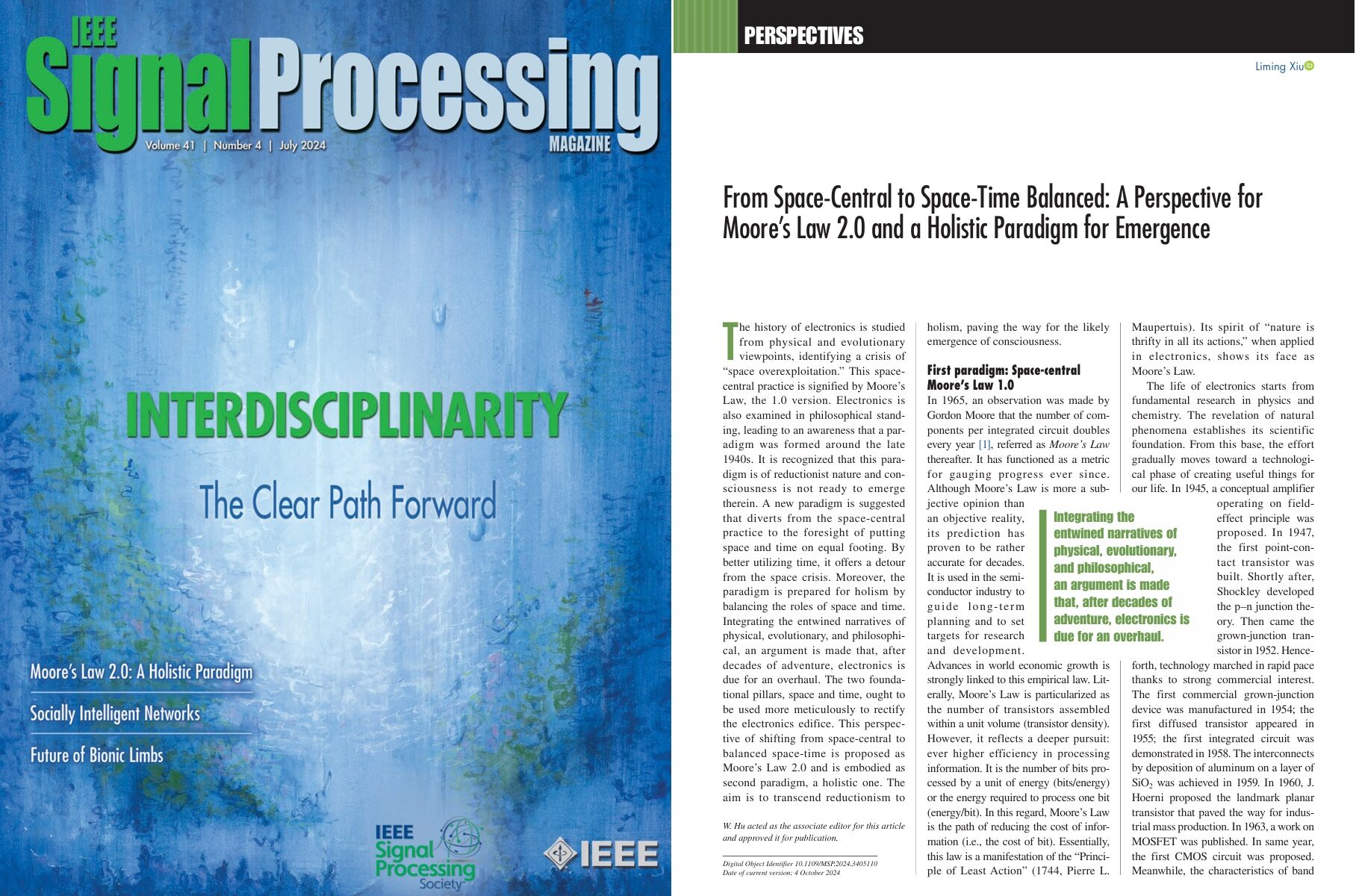A friend of SemiWiki published an article on Moore’s Law in IEEE that I think is worth reading:
IEEE Signal Processing Magazine, Vol. 41, Issue 4.
The topic of Moore’s Law is of paramount importance, reaching almost the entire field of electronics (and the semiconductor industry). In the course of six decades, for the first time, this article proposes a strategic change from “Space-Central” to “Space-Time Balanced” for this “law”. It also challenges contemporary AI practices by arguing that consciousness cannot arise from the current reductionist paradigm (the first paradigm). By promoting a second paradigm of holistic nature, the term of Moore’s Law 2.0 is coined as its emblem.
The abstract of this article is enclosed as follows.
The history of electronics is studied from physical and evolutionary viewpoints, identifying a crisis of “space overexploitation”. This space-central practice is signified by Moore’s Law, the 1.0 version. Electronics is also examined in philosophical stand, leading to an awareness that a paradigm is formed around late 1940s. It is recognized that this paradigm is of reductionist nature and consciousness is not ready to emerge wherein. A new paradigm is suggested that diverts from the space-central practice to the foresight of putting space and time on equal footing. By better utilizing time, it offers a detour from the space crisis. Moreover, the paradigm is prepared for holism by balancing the roles of space and time. Integrating the entwined narratives of physical, evolutionary, and philosophical, an argument is made that, after decades of adventure, electronics is due for an overhaul. The two foundational pillars, space and time, ought to be used more meticulously to rectify the electronics edifice. This perspective of shifting from space-central to balanced space-time is proposed as Moore’s Law 2.0 and is embodied as second paradigm, a holistic one. The aim is to transcend reductionism to holism, paving the way for the likely emergence of consciousness.
The Outline of this article is given below:
First Paradigm: Space-Central Moore’s Law 1.0
Electronics’ history is reviewed. It is opined that a paradigm is formed circa the late 1940’s and Moore’s Law later becomes its mark. The quintessence is to make the basic processing unit ever smaller and assemble ever more of such units into a given space for higher processing capability.
Reflection: Physical, Evolutionary and Philosophical Aspects of Electronics
Electronics is examined under the scopes of physics, evolution, and philosophy. Useful insights are extracted that are used to guide the strategic discussions for future advance.
Edifice of Electronics: Transistor & Signal as Base and Space & Time as Pillars
The field of electronics is virtualized as an edifice. Its foundation is established on transistor and signal. Its two pillars are space and time. The show of signal processing is played by the transistor and signal on the stage sustained by space and time.
Overexploitation of Space: Heading into A Crisis
After decades of ruthless exploitation, the potential from space is exhausted and we are diving into a crisis. Two obstacles are firmly erected by quantum limit and the second law of thermodynamics, impenetrable however sophisticated our engineering skill will be.
Impotence of Logic Based Computing: Consciousness-less
The current electronics edifice is established on the bedrock of symbolic logic. Consciousness is unfortunately beyond the reach of logic and thus is not expected to emerge from this paradigm. Contemporary AI technologies are unable to address this fundamental deficiency.
More Is Different: Second Paradigm of Space and Time on Equal Stand
A new paradigm is proposed where space and time are valued equally. It offers a detour from the space crisis. With the awareness of space and time as vital notions for cognition, this paradigm is prepared for something deeper than the complexity grown out of the sheer increase in number of transistors.
Next Stage of Moore’s Law: from 1.0 of Space-Central and Reductionist AI to 2.0 of Holism
The space crisis and reductionist AI are ramifications of Moore’s Law, the 1.0 version. After decades of endeavor, it is time for us to ponder the electronics deeper and question the existing paradigm for its efficacy. This is reasoned as the motive for Moore’s Law 2.0, a holistic paradigm made for circumventing the space crisis and seeking of true intelligence.
The full article can be found in IEEE Xplore:
The article can also be found here if you cannot access IEEE Xplore
Also Read:
The RISC-V and Open-Source Functional Verification Challenge
Sarcina Democratizes 2.5D Package Design with Bump Pitch Transformers
Share this post via:








CES 2026 and all things Cycling